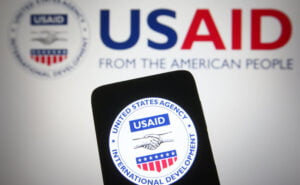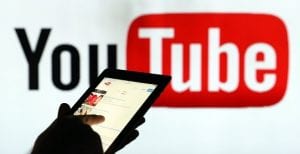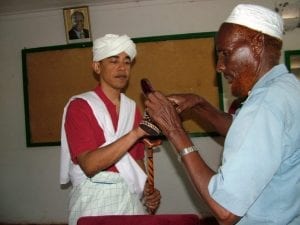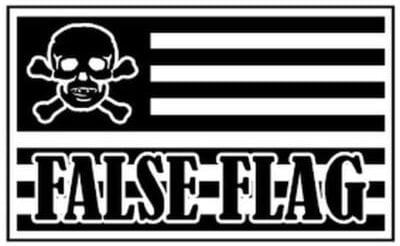A “Trojan Horse” has come to mean any trick or stratagem that causes a target to invite a foe into a securely protected bastion or place. The Trojan Horse is a tale from the Trojan War about the subterfuge that the Greeks used to enter the city of Troy and won the war. In the canonical version, after a fruitless 10-year siege, the Greeks constructed a huge wooden horse, and hid a select force of men inside. The Greeks pretended to sail away, and the Trojans pulled the horse into their city as a victory trophy. That night the Greek force crept out of the horse and opened the gates for the rest of the Greek army, which had sailed back under cover of night. The Greeks entered and destroyed the city of Troy, decisively ending the war. Today, the term “Trojan horse” is still used to refer to any kind of deception or trick that involves getting a target willingly to allow an enemy into a secure place.
The most detailed and most familiar version is in Virgil’s Aeneid, Book II (trans. A. S. Kline).
After many years have slipped by, the leaders of the Greeks,
opposed by the Fates, and damaged by the war,
build a horse of mountainous size, through Pallas’s divine art,
and weave planks of fir over its ribs:
they pretend it’s a votive offering: this rumour spreads.
They secretly hide a picked body of men, chosen by lot,
there, in the dark body, filling the belly and the huge
cavernous insides with armed warriors. […] Then Laocoön rushes down eagerly from the heights
of the citadel, to confront them all, a large crowd with him,
and shouts from far off: “O unhappy citizens, what madness?
Do you think the enemy’s sailed away? Or do you think
any Greek gift’s free of treachery? Is that Ulysses’s reputation?
Either there are Greeks in hiding, concealed by the wood,
or it’s been built as a machine to use against our walls,
or spy on our homes, or fall on the city from above,
or it hides some other trick: Trojans, don’t trust this horse.
Whatever it is, I’m afraid of Greeks even those bearing gifts.”
Examples of Trojan horses today are:
- Muslim Immigration in multiple countries – The Muslims are being used for multiple reasons: (1) as patsies in the war on terror, (2) as patsies in the war on Christian culture, and destabilization catalysts for the divide and conquer agenda of the New World Order.
- Technology such as Windows 10, Pokemon Go, Smart TV, etc. – Many apps and smart technology today have built-in spyware. The government is obsessed with collecting data on every person and tracks your every move, can listen to your conversations through your technology, records your browsing data, and many other Orwellian tactics to be the all-seeing eye in counterfeit fashion to the true God who knows all. Unfortunately, they’re not looking for just the terrorists, as they claim. The true enemies are the free thinkers and freedom-lovers who would dare stand up against their planned tyranny.
- Disney – We invite all of the Disney characters freely into our homes, and never expect it to be harmful in any way, but you will learn from the video that it is not what it is thought to be. Instead, children are being brainwashed with subliminal messaging of sex, drugs, and witchcraft.
- Tax-Exempt Foundations – Millions of people give yearly to organizations such as the Rothschild Foundation, Rockefeller Foundation, Bill & Melinda Gates Foundation, the Carnegie Foundation, The Clinton Foundation, and many others that pretend to have the best interests of those whom they claim to serve at heart, but truly serve the interest of the New World Order.
- ‘Free Trade’ Agreements – Wonderfully packaged as great for the American people, trade agreements like NAFTA and the TransPacific Partnership (TPP) are written by corporations for corporations.
- … and many more Trojan horses that are disguised as something good, but in reality are very harmful to you.
Recommended Books:
 Trans-Pacific Partnership: An Assessment: The Trans-Pacific Partnership (TPP) between 12 Pacific Rim countries has generated the most intensive political debate about the role of trade in the United States in a generation. The TPP is one of the broadest and most progressive free trade agreements since the North American Free Trade Agreement (NAFTA). The essays in this Policy Analysis provide estimates of the TPP’s benefits and costs and analyze more than 20 issues in the agreement, including environmental and labor standards, tariff schedules, investment and competition policy, intellectual property, ecommerce, services and financial services, government procurement, dispute settlement, and agriculture. Through extensive analysis of the TPP text, PIIE scholars present an indispensable and detailed “reader’s guide” that also sheds light on the agreement’s merits and shortcomings.
Trans-Pacific Partnership: An Assessment: The Trans-Pacific Partnership (TPP) between 12 Pacific Rim countries has generated the most intensive political debate about the role of trade in the United States in a generation. The TPP is one of the broadest and most progressive free trade agreements since the North American Free Trade Agreement (NAFTA). The essays in this Policy Analysis provide estimates of the TPP’s benefits and costs and analyze more than 20 issues in the agreement, including environmental and labor standards, tariff schedules, investment and competition policy, intellectual property, ecommerce, services and financial services, government procurement, dispute settlement, and agriculture. Through extensive analysis of the TPP text, PIIE scholars present an indispensable and detailed “reader’s guide” that also sheds light on the agreement’s merits and shortcomings.
Chronological History of Events tagged ‘Trojan Horse’

Top Doctor Warns COVID Jabs Secretly Intended To Reduce World’s Population

Documents Expose How USAID Disguised Millions in COVID Relief to Fund Population Control, Abortion

Dr. Carrie Madej Warns about Covid Vaccines and Tranhumanist Agenda

Churches Across U.S. File Lawsuits Against Democrat Governors

U.S. Surveillance Bill 6666 Introduced in Congress: The Devil in the Details

YouTube Policy To Delete All Accounts That Aren’t “Commercially Viable” Begins

Representative Alexandria Ocasio-Cortez and Senator Ed Markey released a fourteen-page resolution for their Green New Deal

Gates Foundation-Funded GM Mosquitoes Designed to Alter Sexual Development Released in High-Security Lab Experiment

U.S. Commission on Civil Rights Targets Religious Freedom in Conditioning Campaign for a One World Religion




